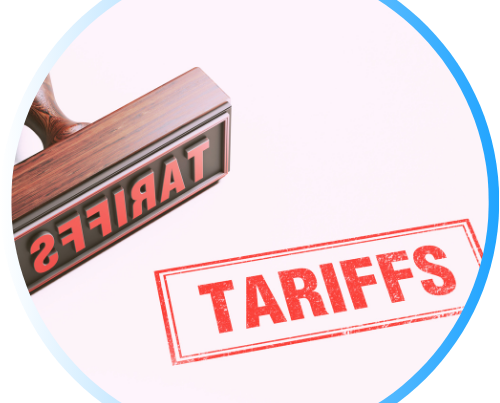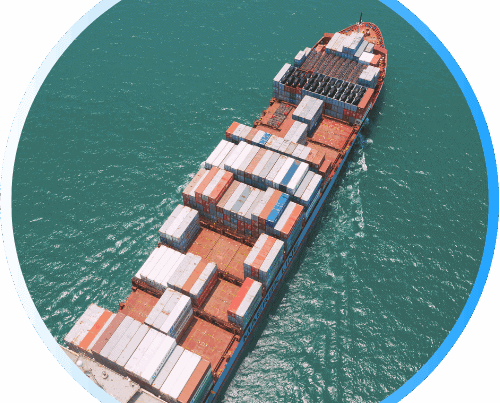Rate Related Update and Market Conditions
Market Conditions
TPEB (Trans-Pacific Eastbound)
-
Trans-Pacific demand is projected to stay flat through July and August, with minimal shifts expected in booking patterns. West Coast rates are diverging due to a mix of July 15 GRIs and bullet rate offerings, while floating rates to the East Coast and Gulf have largely stabilized. Carriers have also backed off on Peak Season Surcharges for the remainder of the month.
FEWB (Far East Westbound)
-
Asia–Europe volumes continue to exceed expectations, extending the peak season window and creating sustained pressure on space and rates. Although the SCFI has remained relatively stable at $2,099/TEU, carrier appetite for additional GRIs appears limited in the short term. Demand outlook remains firm into early August, though macro risks such as Red Sea disruptions and potential EU tariffs could temper momentum later in the quarter.
TAWB (Trans-Atlantic Westbound)
-
Export demand remains consistent on the North Europe–U.S. trade, with stronger bookings reported from Germany, Benelux, and Spain ahead of the holiday season. Despite earlier plans, carriers have postponed July PSS increases across all European subregions. Rates are expected to hold steady through the end of Q3.
Operational Updates
TPEB:
-
Most Asian origin ports report adequate equipment availability, with no immediate shortages noted. However, ongoing congestion in Malaysia and Singapore is contributing to delays, adding three to five days to transit times on Southeast Asia–origin services.
FEWB:
-
Rollover volumes and tight control of equipment remain prevalent. Major alliances are limiting access to containers and compressing booking windows in an effort to manage congestion. Alternate routings may lead to extended transit times by up to four weeks.
TAWB:
-
Key European ports such as PSA Antwerp, Hamburg, Bremerhaven, and Rotterdam are facing dwell times and vessel delays ranging from three to eight days. Southern hubs including Piraeus, Genoa, and Valencia remain heavily congested, with ongoing yard space challenges. Equipment remains constrained across Central and Eastern Europe, including Austria, Hungary, and Portugal.
Capacity Management
TPEB:
-
Carrier utilization for July is estimated at 80%–90%, but expected to decline slightly to 75%–86% in August. Despite some service suspensions and blank sailings to the Pacific Southwest, vessel space remains widely available across the trade.
FEWB:
-
Carriers added 19% more weekly capacity in July compared to June, but recent blank sailings in Week 29 created significant cargo backlogs. Alliances are now focused on clearing these volumes, while still tightly controlling new bookings for Weeks 31 and 32 to avoid further congestion.
TAWB:
-
Trans-Atlantic capacity remains stable with only ~5% of sailings blanked, the lowest rate since March. Carriers have maintained steady deployment levels across key corridors to accommodate pre-holiday export demand.
Sources: xeneta.com, maersk.com, yangming.com, evergreen-line.com, supplychaindive.com
📌 Current U.S. Tariff Status (as of July 18, 2025)
-
-
Trump Proposes New Reciprocal Tariffs:
Effective August 1, the U.S. plans to impose tariffs of 35% on Canada, 30% on the EU, and 30% on Mexico. USMCA exemptions remain unclear.
-
Indonesia Tariff Finalized:
On July 15, a 19% reciprocal tariff on Indonesian goods took effect, replacing a previously proposed 32% rate.
-
EU Response Delayed:
The EU has postponed retaliatory tariffs until early August, aiming to reach a trade deal.
-
Section 301 Investigation Into Brazil:
Following a proposed 50% duty, the USTR launched a Section 301 probe into Brazil on July 15.
-
Other Tariffs on the Horizon:
Proposals include a 20% tariff on Vietnam, 40% on transshipped goods, 10% on BRICS, 200% on pharmaceuticals (with a 1-year transition), and 50% on copper (effective August 1).
-
Source: whitehouse.gov, politico.com, whitehouse.gov


Carriers Cut Trans-Pacific Capacity Ahead of August Tariff Deadline
Ocean carriers are scaling back Asia–U.S. West Coast services as the August 1 expiration of the U.S. tariff pause on Chinese goods approaches. Around 175,000 TEUs—about 11% of total capacity—will be blanked this month. Demand from Southeast Asia has dropped significantly, with remaining cargo flows mostly tied to Chinese exports shipping before new tariffs take effect. Analysts expect rates to weaken further as volume softens through the rest of the summer.
Container Rates Decline for Fifth Week Amid Easing Tariff Pressures
Global container rates fell for the fifth week in a row, with Drewry’s index down 2.6%. Trans-Pacific rates have shown particular weakness, with Shanghai–Los Angeles and Shanghai–New York routes dropping 4% and 6%, respectively. Although rates remain higher than pre-tariff levels from May, the market is softening due to weaker demand. Analysts expect continued declines through the second half of 2025 as capacity remains high and tariff-related volatility fades.


EU Imposes New Sanctions on Russia, Targets Oil Price Cap and Shipping
The European Union has approved an 18th round of sanctions against Russia, including a revised oil price cap set at 15% below market rates. The package also includes a ban on Nord Stream-related transactions and the blacklisting of over 100 ships in Russia’s “shadow fleet.” Some Chinese banks accused of helping to evade sanctions were also targeted. Despite the move, analysts remain cautious about the EU’s ability to enforce these measures without U.S. financial backing.

